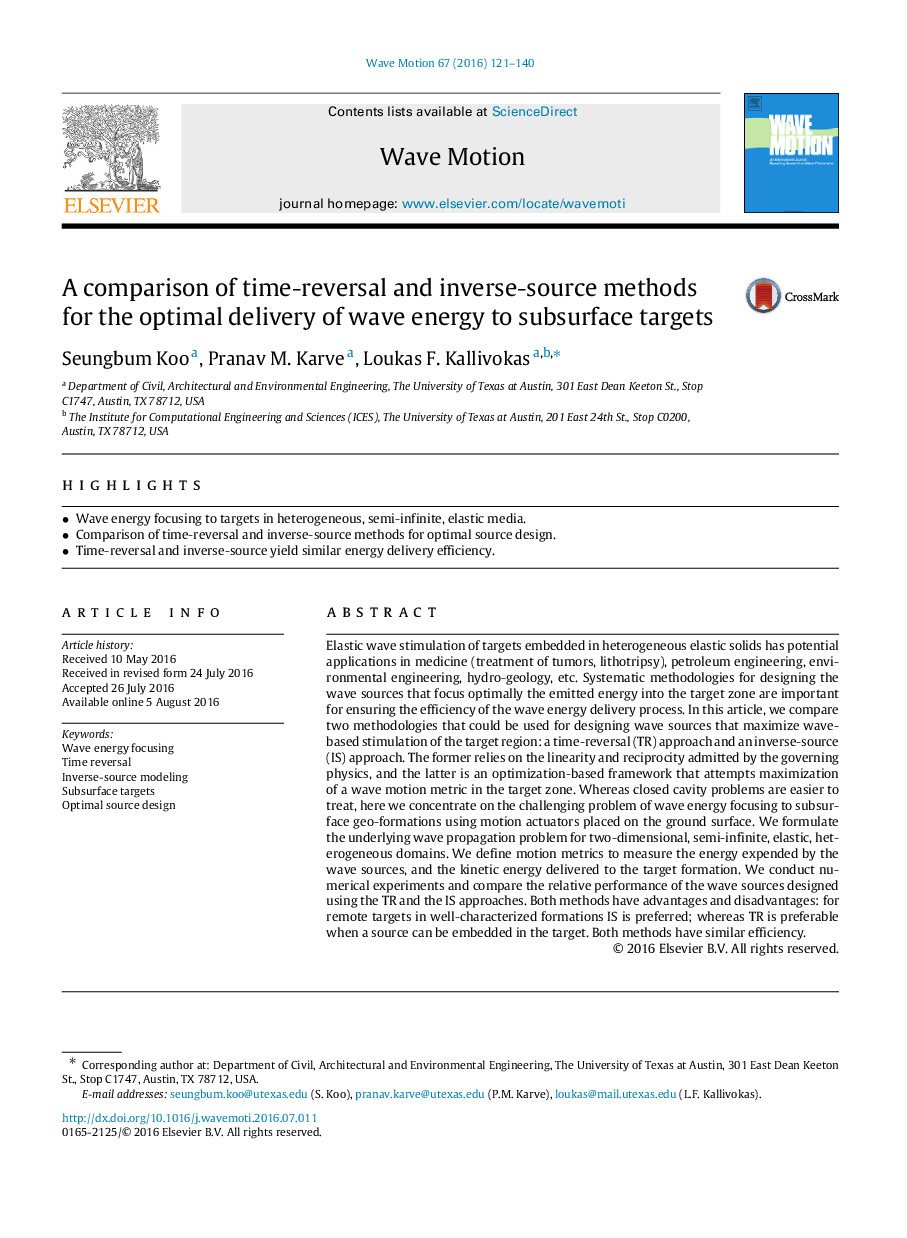| کد مقاله | کد نشریه | سال انتشار | مقاله انگلیسی | نسخه تمام متن |
|---|---|---|---|---|
| 8256885 | 1534264 | 2016 | 20 صفحه PDF | دانلود رایگان |
عنوان انگلیسی مقاله ISI
A comparison of time-reversal and inverse-source methods for the optimal delivery of wave energy to subsurface targets
ترجمه فارسی عنوان
مقایسه روشهای برگشت معکوس و منبع معکوس برای تحویل بهینه انرژی موج به اهداف زیرزمینی
دانلود مقاله + سفارش ترجمه
دانلود مقاله ISI انگلیسی
رایگان برای ایرانیان
کلمات کلیدی
تمرکز انرژی موج، معکوس کردن زمان، مدل سازی معکوس، اهداف زیرزمینی، طراحی منبع بهینه،
موضوعات مرتبط
مهندسی و علوم پایه
علوم زمین و سیارات
زمین شناسی
چکیده انگلیسی
Elastic wave stimulation of targets embedded in heterogeneous elastic solids has potential applications in medicine (treatment of tumors, lithotripsy), petroleum engineering, environmental engineering, hydro-geology, etc. Systematic methodologies for designing the wave sources that focus optimally the emitted energy into the target zone are important for ensuring the efficiency of the wave energy delivery process. In this article, we compare two methodologies that could be used for designing wave sources that maximize wave-based stimulation of the target region: a time-reversal (TR) approach and an inverse-source (IS) approach. The former relies on the linearity and reciprocity admitted by the governing physics, and the latter is an optimization-based framework that attempts maximization of a wave motion metric in the target zone. Whereas closed cavity problems are easier to treat, here we concentrate on the challenging problem of wave energy focusing to subsurface geo-formations using motion actuators placed on the ground surface. We formulate the underlying wave propagation problem for two-dimensional, semi-infinite, elastic, heterogeneous domains. We define motion metrics to measure the energy expended by the wave sources, and the kinetic energy delivered to the target formation. We conduct numerical experiments and compare the relative performance of the wave sources designed using the TR and the IS approaches. Both methods have advantages and disadvantages: for remote targets in well-characterized formations IS is preferred; whereas TR is preferable when a source can be embedded in the target. Both methods have similar efficiency.
ناشر
Database: Elsevier - ScienceDirect (ساینس دایرکت)
Journal: Wave Motion - Volume 67, December 2016, Pages 121-140
Journal: Wave Motion - Volume 67, December 2016, Pages 121-140
نویسندگان
Seungbum Koo, Pranav M. Karve, Loukas F. Kallivokas,
